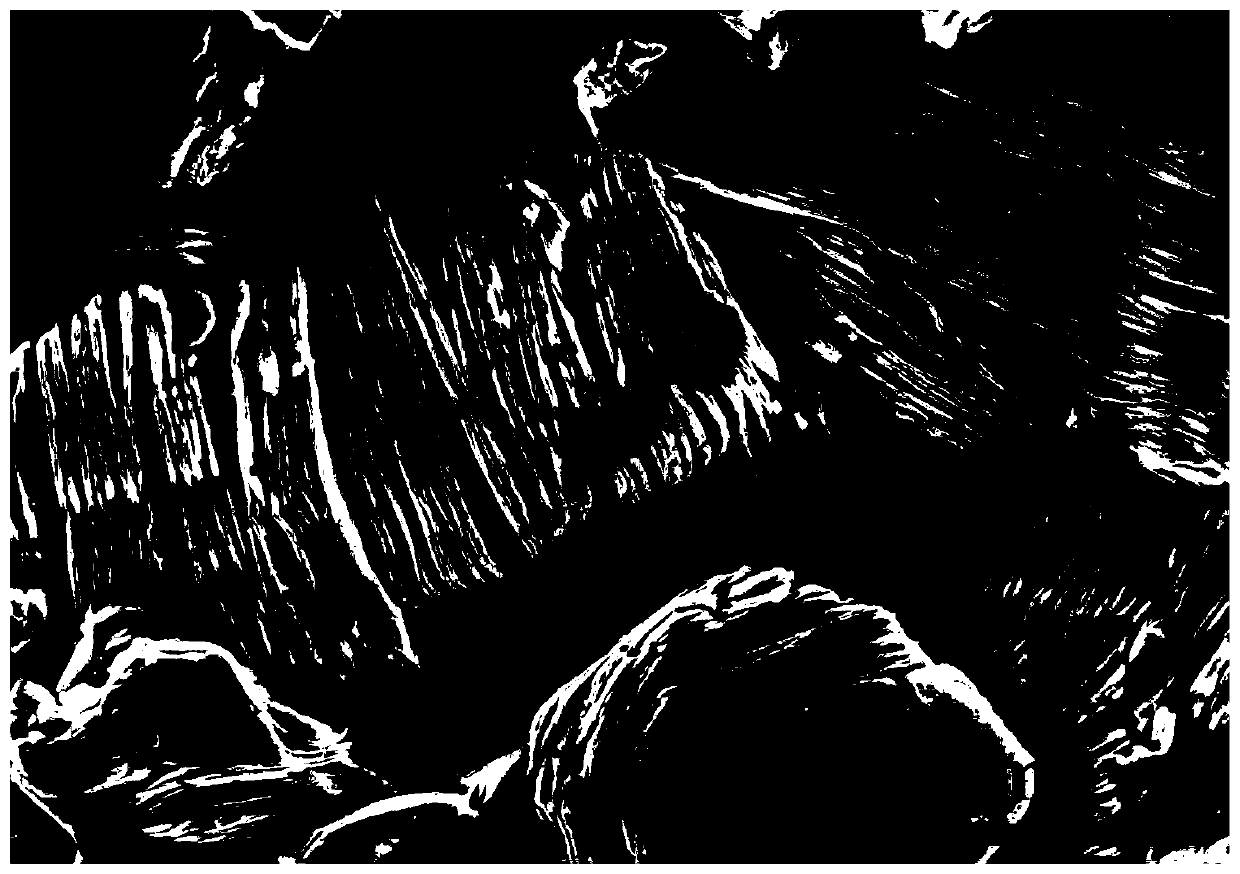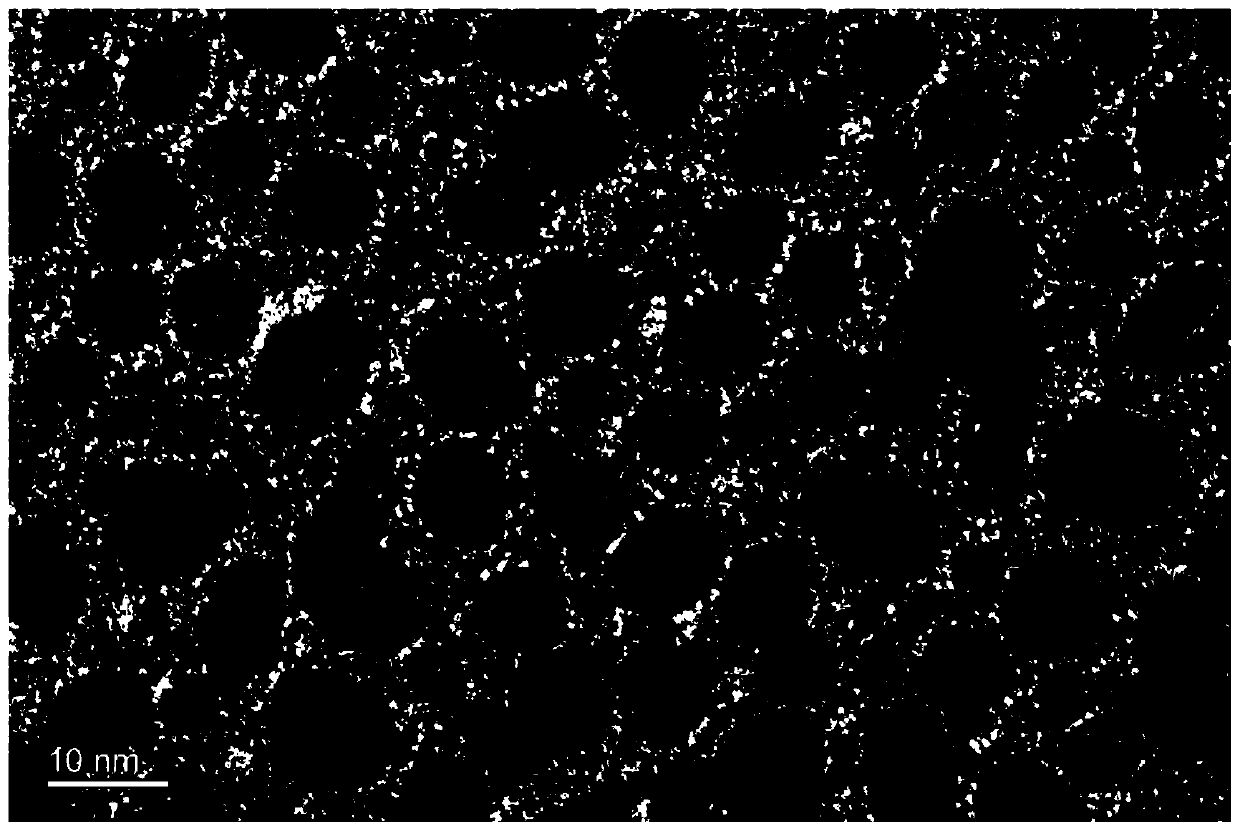Non-oxidation Ti3C2 quantum dots with function of selectively killing cancer cells, and preparation method and application of non-oxidation Ti3C2 quantum dots
A technology of quantum dots and cancer cells, which is applied to medical preparations containing active ingredients, wave energy or particle radiation treatment materials, titanium carbide, etc., can solve problems that have not been reported in the preparation, achieve inhibition and killing of cancer cells, and prepare The method is simple and convenient, and the effect of good biocompatibility
- Summary
- Abstract
- Description
- Claims
- Application Information
AI Technical Summary
Problems solved by technology
Method used
Image
Examples
Embodiment 1
[0047] Embodiment 1, raw material Ti 3 C 2 Preparation of (MXene)
[0048] First, add Ti to a Teflon beaker 3 AlC 2 (MAX phase) 10 parts, then slowly add 90 parts of hydrofluoric acid several times in small amounts, and after the addition, keep stirring for 3 days under the condition that the ambient temperature is 30° C. until the reaction is complete. Then, centrifugation and multiple washings were performed until the pH was close to 7. Then carry out vacuum drying treatment to obtain black Ti 3 C 2 Base powder.
[0049] Test the Ti that this embodiment obtains 3 C 2 SEM images of substrates, such as figure 1 shown. Depend on figure 1 It can be seen that Ti 3 C 2 The substrate size is on the micron scale.
Embodiment 2
[0050] Embodiment 2, "micro-explosion" method prepares Ti 3 C 2 quantum dot
[0051] 10 parts of two-dimensional material Ti 3 C 2 Place in a Teflon beaker, pour 50 parts of liquid nitrogen into the beaker and keep at room temperature for 3 minutes. During this process, liquid nitrogen will intercalate Ti 3 C 2 And accompanied by continuous evaporation. When the remaining amount of liquid nitrogen in the beaker is small, quickly add 50 parts of deionized water at 100°C. Since the boiling point of liquid nitrogen is -196°C, extreme temperature differences will be generated, resulting in 3 C 2 The liquid nitrogen in the interlayer will quickly vaporize, and a large amount of deionized water will form a water seal effect, making Ti 3 C 2 The microscopic accordion-like structure forms a closed space, which in turn triggers a "micro-explosion" to obtain an aqueous suspension. The entire process described above only takes a few minutes. (Note: If the residual amount of l...
Embodiment 3
[0057] Embodiment 3, " micro-explosion " method prepares Ti 3 C 2 quantum dot
[0058] 20 parts of two-dimensional material Ti 3 C 2 Place in a Teflon beaker, pour 50 parts of liquid nitrogen into the beaker and keep at room temperature for 2 minutes. During this process, liquid nitrogen will intercalate Ti 3 C 2 And accompanied by continuous evaporation. When the remaining amount of liquid nitrogen in the beaker is very small, quickly add 50 parts of deionized water at 90°C. Since the boiling point of liquid nitrogen is -196°C, extreme temperature differences will be generated, resulting in 3 C 2 The liquid nitrogen in the interlayer will quickly vaporize, and a large amount of deionized water will form a water seal effect, making Ti 3 C 2 The microscopic accordion-like structure forms a closed space, which in turn triggers a "micro-explosion" to obtain an aqueous suspension. The entire process described above only takes a few minutes. (Note: If the residual amoun...
PUM
| Property | Measurement | Unit |
|---|---|---|
| size | aaaaa | aaaaa |
| size | aaaaa | aaaaa |
Abstract
Description
Claims
Application Information
 Login to View More
Login to View More - R&D
- Intellectual Property
- Life Sciences
- Materials
- Tech Scout
- Unparalleled Data Quality
- Higher Quality Content
- 60% Fewer Hallucinations
Browse by: Latest US Patents, China's latest patents, Technical Efficacy Thesaurus, Application Domain, Technology Topic, Popular Technical Reports.
© 2025 PatSnap. All rights reserved.Legal|Privacy policy|Modern Slavery Act Transparency Statement|Sitemap|About US| Contact US: help@patsnap.com



